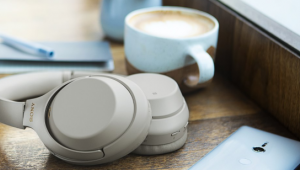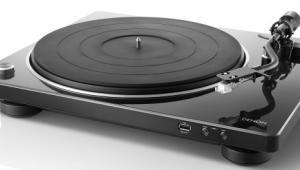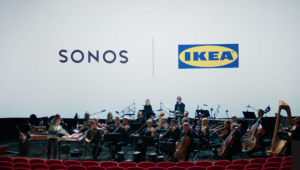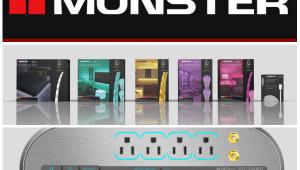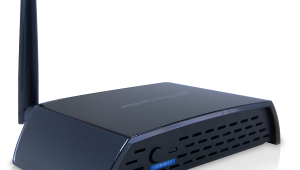Harman/Kardon Invoke with Cortana: a Smart Speaker That Actually Sounds Great
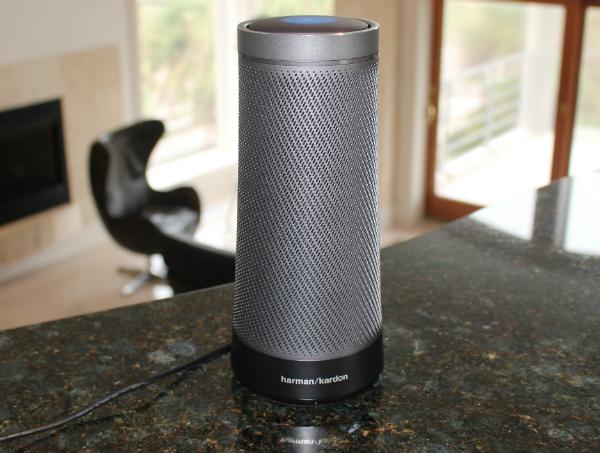
The Harman/Kardon Invoke (MSRP $199) is the first smart speaker featuring Cortana, by Microsoft. While it’s odd that the first speaker from Harman/Kardon doesn’t have their new owner Samsung’s Bixby, it is most likely because Bixby isn’t quite ready for prime time, while Cortana is ready for her spotlight. (And someone will have to tell me why all these voice assistants are female voices. Can we get a nice, friendly male voice into the mix?)
The Invoke is a tall, metal cylinder housing three tweeters, three woofers and two passive radiators that provide 360-degree sound. Since Amazon’s Echo was the first to the market, it seems that everyone else is following its Pringle-can form factor. The Invoke only plays a mono signal, but powered by a 40-watt amplifier, it does provide a loud, room-filling sound with very little distortion.
Bass response is better than most of the competing systems but isn’t exactly earth-shaking. What bass it does have is tight and impactful. The frequency response is 60Hz - 20kHz (-6dB) and it really doesn’t have much below 60Hz.
The midrange and treble are where the Invoke shines. Cortana’s voice is clear and natural, especially on segments that were recorded as opposed to computer generated; for example, when you ask her to sing, or recite poetry. On music playback, the sound is clean and accurate, with very little coloration or harshness, even when pushed to louder levels. This is a system that you could reasonably use all the time for background music, not just as a digital assistant.
The top of the cylinder has an array of seven microphones, so the system can hear you from any direction. The top edge of the Invoke can be turned for a volume control (although Cortana can change the volume when asked). This control is exceptionally smooth - given Harman’s experience in making high-end components with volume knobs, this isn’t a surprise.
The top surface of the Invoke is touch-capacitive, and it also has a circular light display that indicates volume settings and different listening and pairing modes. Tap it for getting Cortana to offer trivia tidbits or to use while making a phone call. Towards the bottom is a Bluetooth button and a microphone mute button to turn off the built-in microphones for privacy. Underneath is the power connection for the ridiculously short power cable and a USB port for future use. Alas, there isn’t an audio output.
I’ve listened to the offerings from Amazon and Google, and the Invoke has a much better sound than anything currently available from either of those two. This is my first experience having a system in my home for a long audition. Let’s just say, this is the beginning of a beautiful friendship.
After downloading the Cortana app on my (Android) phone, setting up the Invoke was easy. In no time, she was connected to my home WiFi system. It was time to see what she could, and couldn’t do. Cortana can play music via Bluetooth, but her real beauty shines in her direct interface with music apps. Currently, she supports iHeart Radio, TuneIn, and premium services from Spotify. Harman is working with Pandora to provide support on that platform in the near future. Simply say, “Hey Cortana, play Adele” and she’ll start playing from Spotify. Tell her to play from iHeart Radio and she’ll switch seamlessly. The audio quality from Spotify Premium is better than iHeart Radio and TuneIn and worth the cost of the subscription. While any song is playing, you can ask her the name of the song or who’s the artist, tell her to add the song to a playlist, or purchase the song.
Using the system in my office, the music playback sounded great, and the Invoke had no problem listening for my voice prompts. When I moved the Invoke to my great room, there were a few times that I had to walk closer to her and speak slowly and clearly for her to understand my command. This is in a very large, open, reverberant space, so it isn’t surprising she has trouble in that location.
I deeply and truly wished the Invoke had stereo playback. When a system sounds this good, it’s too easy to use it all the time instead of a true stereo system. I know that in the weeks that I’ve had it, I haven’t bothered to use my home stereo, instead opting to turn this on whenever I walked into the room.
At this time, Cortana will interface with Skype with unlimited domestic calling, and there are an array of smart home features that it will work with, like Nest and Philips Hue. No surprise, but it will work with the Samsung line of SmartHome devices. Cortana does have a slowly growing list of “skills” that she’ll work with, including Dominos pizza, so you can order a pizza without ever getting off the couch or lifting your phone.This list is much shorter than those available for Alexa, but it should be growing as more people start using Cortana.
Any prospective buyer should get their priorities straight; if you’re looking for good sound quality, this might be one of the best, if not the best AI speaker on the market. But if you’re more concerned with the AI performance, you might want to think twice; currently, Cortana isn’t quite as capable as her competitors, but the beauty of a virtual assistant is that one day, she will be.




